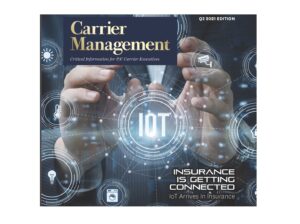“All Black folks have a drawer.”
The comment may have gone unnoticed at an insurance gathering last year, when Sylvia Alston, managing partner of Momentum Risk Partners, tossed it out quietly as she spoke about the life experiences and career path that drove her to open her own boutique insurance and risk management firm.
“I just knew how people inside my demographic purchased insurance,” said Alston, a Black woman, speaking at the IICF Inclusion in Insurance virtual conference in October 2020, as she spoke about her struggle to convince her employer, an insurance brokerage, to do business with the Black community.
“They pick up the phone and they dial 1-800-INSURANCE. They tell somebody what they need. Something kicks out to them. They pay for it. They put that item in their safe deposit box or their drawer—because all Black folks have a drawer. You need to know that,” she said.
For most IICF conference attendees, the “drawer” wasn’t the most memorable part of Alston’s presentation—one in which she told the story of her father, a U.S. postal worker and union representative who reported racism in his workplace in the 1980s, was ultimately fired for exposing the bias, and suffered with anxiety and depression for the rest of his life. Speaking in measured tones, she would later reveal that rereading the documentation of her father’s struggles—and hearing his voice as she did so after his death—were the push she needed to move her to start her Black-owned boutique insurance brokerage “with a penchant for the demographic that has been so poorly represented, so poorly counseled, so overlooked and undervalued.”
As much as the reporter in me cringes when I hear blanket statements about “all” or “everyone” in a group, the “drawer” idea stayed with me. And I made a connection to it recently when I was editing one of the articles in the third-quarter edition of Carrier Management magazine—Denise Johnson’s report, “The Claims Resolution Process Is About to Get a D&I Makeover.” Like brokers trying to sell insurance to diverse populations, insurance claims handlers need a better understanding of claimants that don’t come from the communities where they were raised.
Speaking about workers compensation claims adjusting, in particular, K. Martine Cumbermack, a litigator who provides counsel for insurers and employers, told Johnson that the claims adjuster-injured worker connection, in her opinion, is just about as important as the worker’s connection to his or her employer. In her words, “how they connect with that claimant, how they perceive that claimant, how they believe that claimant” matters.
In the article, focused on an initiative to increase diversity in mediator and arbitrator pools, Douglas Burrell, president-elect of the Defense Research Institute, one of the organizations involved in the initiative, is also quoted. “Sometimes, there are subtle cultural clues that people wouldn’t pick up unless you are from that culture,” he said, making the point that cultural misunderstandings can result in increased claim costs.
Subtle, like a drawer for insurance papers that sellers of insurance don’t know much about. And much less subtle, like language barriers.
The claims side of the insurance business is waking up to the need to connect with claimants at a more personal level, not only by diversifying mediation and arbitrator pools to include people who can better relate to claimants’ life experiences but also by training claims professionals and supervisors to understand unconscious biases, Johnson reports.
In Carrier Management’s third-quarter magazine, there are 20 pages devoted to connections of a different kind—connections being made with insureds through the Internet of Things, which hold the promise of reducing claims in a variety of insurance lines. But connections on a more individual level—between claimants and the insurance professionals who are ultimately determining the value of their claims—are important ties to a better future, too.






















 Why ‘Good Enough’ Is Killing Insurance: The Hidden Cost of Satisficing
Why ‘Good Enough’ Is Killing Insurance: The Hidden Cost of Satisficing  Executives on the Move at Liberty Mutual, Cowbell, W. R. Berkley
Executives on the Move at Liberty Mutual, Cowbell, W. R. Berkley  Carrier Management’s 2025 Top Features (Reader’s Picks Unlocked)
Carrier Management’s 2025 Top Features (Reader’s Picks Unlocked)  First Atlantic Hurricane Forecast for 2026 Suggests Season Close to 30-Year Norm
First Atlantic Hurricane Forecast for 2026 Suggests Season Close to 30-Year Norm 










